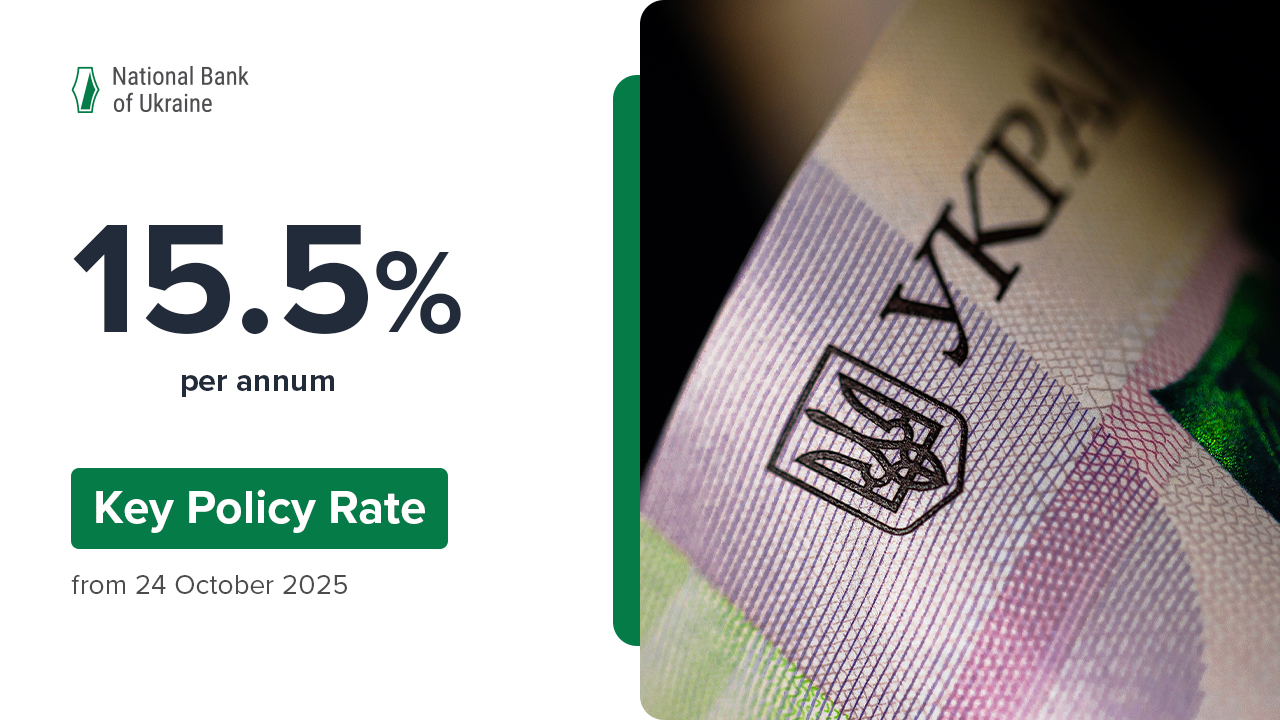In January 2020, consumer inflation declined in annual terms to 3.2% (down from 4.1% in December). In monthly terms, prices grew by 0.2%. This is according to data published by the State Statistics Service of Ukraine.
At the start of 2020, inflation expectedly broke out of the 5% ± 1 pp target range by breaching its lower bound. The slowing inflation was primarily caused by the ongoing impact of last year’s hryvnia strengthening on consumer prices. This effect was stregnthened by lower global energy prices and a greater supply of raw food products. These factors outweighed the impact of rapid growth in consumer demand and wages.
The slowdown in inflation in January was consistent with the NBU’s projected trajectory published in the January 2020 Inflation Report.
- Core inflation decelerated to 3.3% yoy (down from 3.9% yoy in December). The hryvnia’s appreciation continued to be reflected in prices for imported goods and products with a large share of imported inputs. Apart from that, an improvement in inflationary expectations among all groups of respondents supported a weakening in fundamental inflationary pressure.
Driven by the exchange rate factor, nonfood prices declined faster (by 3.0% yoy). Prices for clothing and footwear, cars, home appliances, and electronic devices declined from last year’s levels. Prices for some goods in these categories fell by 5%–12%. Prices for furniture, dishware, flowers, cleaning products, and pharmaceuticals edged higher.
The price growth of processed foods – especially those that rely heavily on imported inputs – continued to slow (to 4.6% yoy). Specifically, prices for pasta, fish, seafood, and tea increased more slowly, while prices for rice and olive oil declined. In addition, the growth in prices of bread and bakery products decelerated due to the rich grain harvest.
The growth in services prices decelerated as expected (to 11.5% yoy), but remained the highest among the main components of inflation. This was due to sustained growth in consumer demand and higher business costs, compensation of employees in particular. Prices grew rapidly for education, mobile communications, cable TV, hairdressing, and healthcare. Prices for financial, notary, funeral, and hotel services rose even faster. At the same time, the hryvnia’s strengthening continued to affect the prices of services with import-driven costs (cinema tickets, the internet, dry cleaning services) or those heavily dependent on the exchange rate (housing rentals and travel services).
- The growth in raw food prices decelerated significantly (to 1.1% yoy). An ample harvest of most vegetables and relatively warm weather in November through January intensified the drop in prices for cabbage, carrots, onions, beets, tomatoes, cucumbers, eggplants, and bell peppers. Potato prices grew more slowly as well. The decline in feed prices, strengthened competition in external markets, and growth in domestic production resulted in lower prices for poultry products. The hryvnia’s strengthening and a sufficient supply of imports helped reduce the rate of increase in prices for fruits, especially bananas and citrus fruits.
- The growth in administered prices slowed (to 8.0% yoy). In particular, the prices of alcoholic beverages and tobacco products rose at a slower pace. Prices for heating and hot water supply have practically returned to last year’s levels. Despite a month-on-month increase in natural gas rates for households (taking into account changes in the approach to calculating these rates, and a separate transportation charge), they remained significantly lower than a year ago.
- Fuel prices declined more slowly (by 6.1% yoy). The waning effect of the drop in global oil prices in previous months was offset by further hryvnia strengthening and lower retail markups.
The actual indicators of price dynamics were in line with the NBU’s projected trajectory. Consumer inflation broke out of the 5% ± 1 pp target range by breaching its lower bound and will likely remain at that level in the months ahead as it continues to reflect last year’s hryvnia strengthening, lower global energy prices, and easing pressures from the supply of certain foods. Before the year draws to a close, however, consumer inflation will return to the target range, spurred by robust domestic demand and a further easing of monetary policy by the NBU.







